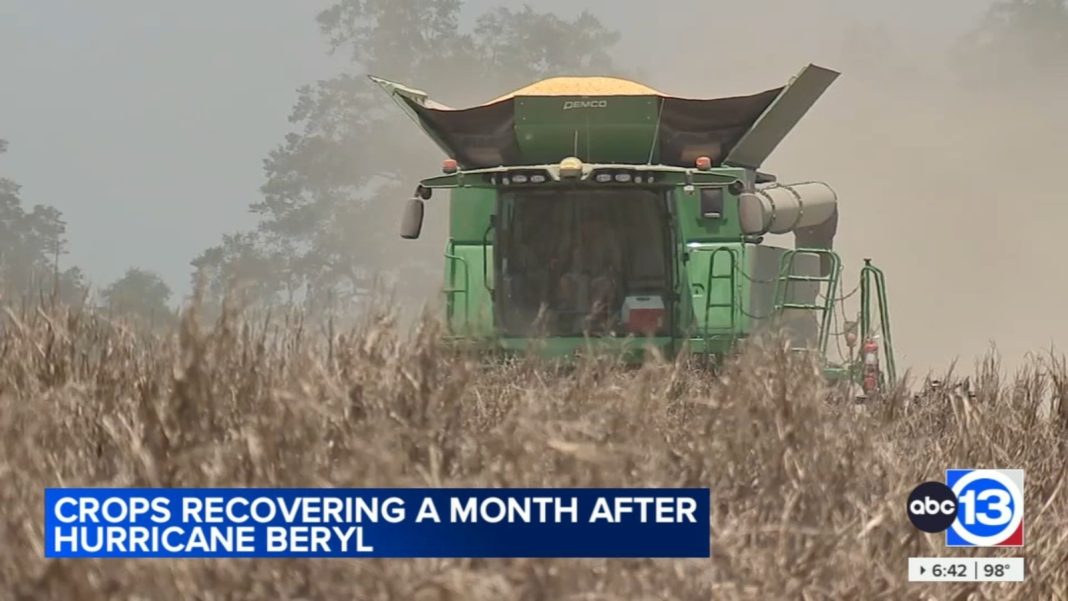Impact of Hurricane Beryl on Farmers and Crops in Texas
Farmers in Texas are breathing a sigh of relief as they believe that Hurricane Beryl may not have caused as much damage to their crops as initially feared. However, the summer storms could still have a lasting impact on the agricultural industry in the region.
Just a month ago, farmers like Tim Krenek were deeply concerned about the fate of their crops. Krenek, who owns a farm in Wharton County, expressed his worries about potential losses. Fortunately, he now feels “a whole lot better” as the situation has improved. While Hurricane Beryl did knock over his corn stalks, the subsequent weeks of rain exacerbated the damage. Moreover, the wet fields made it impossible to harvest the crops using heavy equipment.
After several days of drier conditions, Krenek can finally start harvesting his crops. However, he had to invest $20,000 in special equipment to collect the knocked-over corn. Unfortunately, not all farmers can afford such expenses, and many are facing crop losses, higher equipment costs, and lower corn prices. As a result, some farms may be forced to close down.
According to Texas A&M AgriLife Extension agents, Hurricane Beryl caused significant damage to crops in Wharton and Matagorda counties, affecting approximately 235,000 acres of farmland. The impact was not limited to corn but also extended to cotton and soybeans. Surprisingly, the agents noted that the three weeks of rain following the hurricane may have been more damaging than the wind itself.
Experts estimate that up to 25% of the corn crop could be lost, and farmers could lose a bale of cotton per acre. These losses could amount to over $50 million. The implications of this extend beyond the farming community and could impact consumers as well. With fewer crops available, farmers will have to import feed from other regions, driving up costs. This, in turn, could lead to higher prices for products like eggs and chicken.
Farmers had initially anticipated a decent harvest this summer, and they are grateful that the damage caused by Hurricane Beryl isn’t as severe as initially feared. However, they remain concerned about the future of the local farming community and the potential long-term consequences of the storms.
In conclusion, the impact of Hurricane Beryl on farmers and crops in Texas has been significant. While the damage may not have been as extensive as initially feared, farmers still face challenges such as crop losses, increased equipment costs, and lower prices. The local farming community could undergo substantial changes, and consumers may also feel the effects through higher prices for agricultural products. It is imperative for farmers and stakeholders to collaborate and find sustainable solutions to mitigate the impact of future storms and ensure the stability of the agricultural industry in the region.


